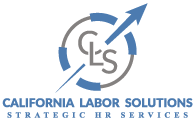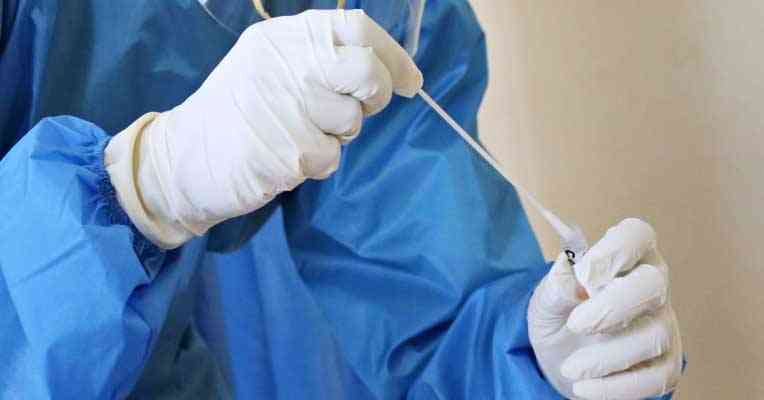On May 6, 2020, California Governor issued Executive Order N-62-20, creating a temporary rebuttable presumption that employees who were working outside of their homes and tested positive for COVID-19, could receive workers’ compensation benefits. The Executive Order expired on July 5, 2020. SB 1159 represents the California Legislature’s response to Newsom’s Executive Order and creates a codified framework for COVID-19-related workers’ compensation claims.
On September 17, 2020, California Governor, signed Senate Bill (“SB”) 1159, which creates a rebuttable presumption that certain employees who test positive for COVID-19 contracted the virus at work for workers’ compensation purposes. This took effect immediately (September 17, 2020) as an urgency statute and expires on January 1, 2023.
Who Is Covered Under SB 1159?
First Responders and Healthcare Workers are covered regardless of employer size. Other types of employees are covered only if they work for an employer with five (5) or more employees. The following two tests apply depending on the employee classification.
First Responders and Healthcare Workers
If the employee is a First Responder or Healthcare Worker as specified under Labor Code Section 3212.87 (i.e Firefighters, Police Officers, Doctors, Nurses, etc.), the following two conditions are needed for the presumption to apply:
– The employee has tested positive for COVID-19 within 14 days after a day that the employee performed labor or services at the employee’s “place of employment” (defined below) at the employer’s direction.
– The day referenced in paragraph (1) was on or after July 6, 2020. (The date of injury shall be the last date the employee performed labor or services at the employee’s place of employment at the employer’s direction prior to the positive test.)
All Other Employees
The presumption also applies to all employees who test positive for COVID-19 during an “outbreak” at “workplace,” and whose employer has five or more employees. For the presumption to apply, the following three conditions must exist:
– The employee tests positive for COVID-19 within 14 days after a day that the employee performed labor or services at the employee’s place of employment at the employer’s direction;
– The day referenced in paragraph (1) was on or after July 6, 2020. (The date of injury shall be the last date the employee performed labor or services at the employee’s place of employment at the employer’s direction prior to the positive test); and
– The employee’s positive test occurred during a period of an “outbreak” at the employee’s specific place of employment.
An “outbreak” exists if within 14 calendar days, one of the following occurs at a specific place of employment:
– If the employer has 100 or fewer employees at a specific place of employment, four employees test positive for COVID-19;
– If the employer has more than 100 employees at a specific place of employment, four percent of the number of employees who reported to the specific place of employment test positive for COVID-19; or
– A specific place of employment is ordered to close by a local public health department, the State Department of Public Health, the Division of Occupational Safety and Health, or a school superintendent due to a risk of infection with COVID-19.
A “workplace” means the building, store, facility, or agricultural field where an employee performs work at the employer’s direction. It does not include the employee’s home or residence, unless the employee provides home health care services to another individual at the employee’s home or residence.
How Does an Employer Dispute the Presumption?
The employer may dispute the presumption with controverted evidence, such as:
– Evidence of measures in place to reduce potential transmission of COVID-19 in the employee’s place of employment; and
– Evidence of an employee’s nonoccupational risks of COVID-19 infection.
If the date of injury falls before July 6, 2020, which is subject to the rules established by Executive Order N-62-20, the claim administrator has 30 days to deny the claim. If the date of injury falls on or after July 6, 2020, the claim administrator has 45 days to deny the claim, or the injury is presumed compensable. This presumption of compensability remains rebuttable, but only with evidence discovered subsequent to the applicable investigation period. Unless controverted, the appeals board is bound to find in accordance with the presumption.
Note: If the injured employee is a First Responder or Health Care Worker, as specified under Labor Code Section 3212.87, the claim administrator has 30 days to deny the claim regardless of the date of injury.
What Compensation Benefits Are Injured Employees Entitled To?
If the presumption applies, compensation includes full hospital, surgical, medical treatment, disability indemnity, and death benefits.
However, if an employee has paid sick leave benefits specifically available in response to COVID-19, those benefits shall be used and exhausted before any temporary disability benefits are due and payable. If an employee does not have supplemental paid sick leave benefits, the employee must be provided temporary disability from the date of disability (i.e. there is no waiting period).
Moreover, the date the employee has tested positive or is diagnosed with COVID-19 determines how the employee qualifies for temporary disability benefits.
If the employee has tested positive or is diagnosed with COVID-19 on or after May 6, 2020, the employee must be certified for temporary disability within the first 15 days after the initial diagnosis, and must be recertified for temporary disability every 15 days thereafter, for the first 45 days following diagnosis.
If the employee has tested positive or was diagnosed with COVID-19 before May 6, 2020, the employee must have obtained a certification no later than May 21, 2020 documenting the period for which the employee was temporarily disabled and unable to work, and shall be recertified for temporary disability every 15 days thereafter, for the first 45 days following diagnosis.
New Reporting Requirements For Employers
Any employer who is aware of an employee who tested positive between July 6, 2020 and September 17, 2020, must report the incident to its claims administrator in writing via email or fax within 30 business days of September 17, 2020. The claims administrator will then use the information reported to determine if an outbreak has occurred between July 6, 2020 and September 17, 2020.
An employer or other person acting on behalf of an employer who intentionally submits false or misleading information or fails to submit information will be subject to a civil penalty in the amount of up to ten thousand dollars ($10,000) to be assessed by the Labor Commissioner.
The above information should be added to your in-house COVID management file.
To know more about the new reporting requirements please read this post -> COVID-19 Exposure Notifications Requirements.
Please note that during this time of crisis, the updates, advisories and regulations that we receive from the promulgating agency often contain ambiguities and/or are often amended, modified or updated. The statements/opinions expressed herein is not legal advice. The opinions expressed herein are based on our reasonable interpretation of the issuing agency’s publication at the time the opinion is expressed and is therefore subject to change based on further developments. The effect of the opinions expressed may be different based on your particular circumstances, and it is recommended that you not rely upon these general opinions prior to obtaining a consultation with your legal and/or financial advisors.

